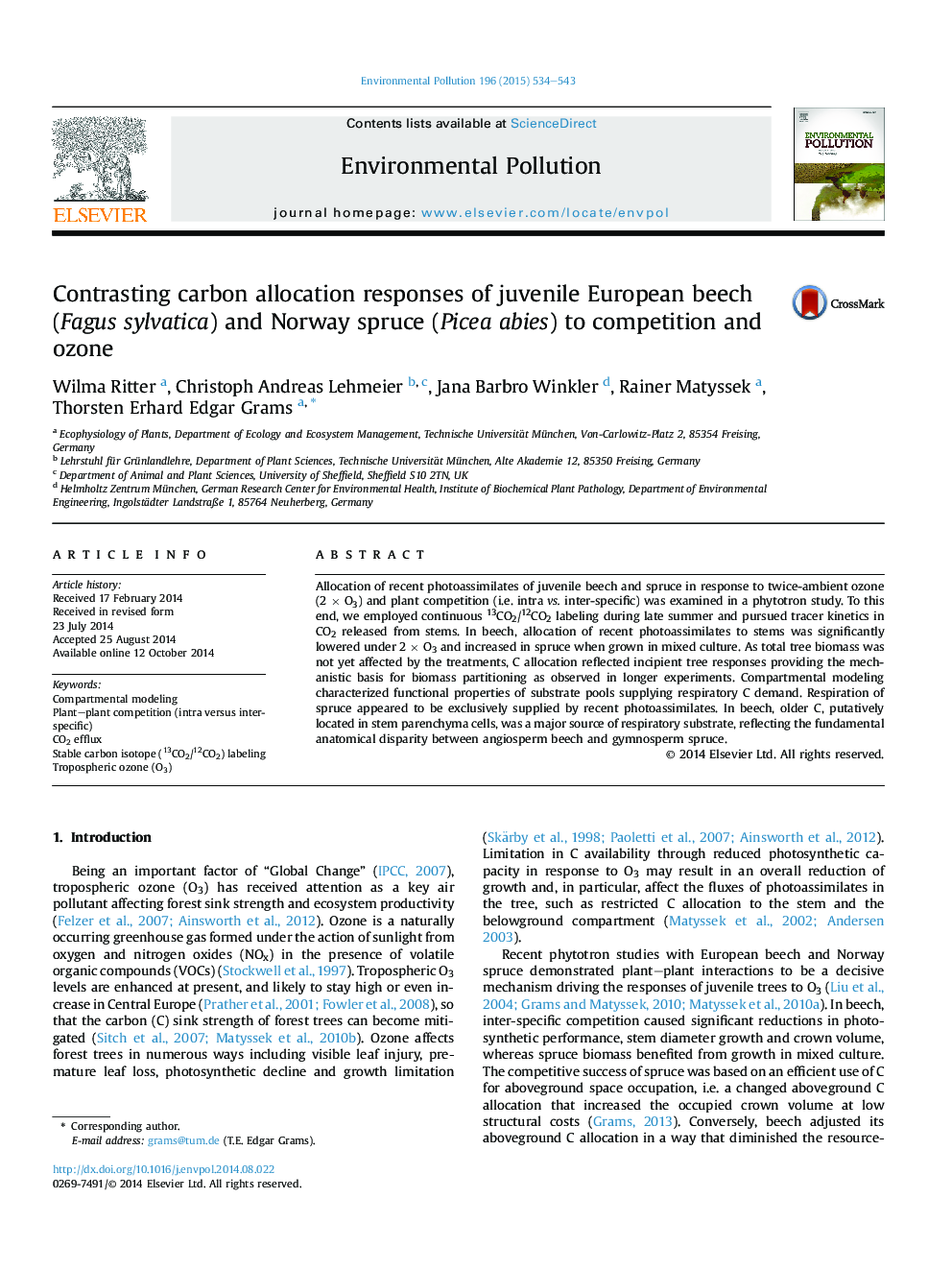| Article ID | Journal | Published Year | Pages | File Type |
|---|---|---|---|---|
| 6318034 | Environmental Pollution | 2015 | 10 Pages |
Abstract
Allocation of recent photoassimilates of juvenile beech and spruce in response to twice-ambient ozone (2Â ÃÂ O3) and plant competition (i.e. intra vs. inter-specific) was examined in a phytotron study. To this end, we employed continuous 13CO2/12CO2 labeling during late summer and pursued tracer kinetics in CO2 released from stems. In beech, allocation of recent photoassimilates to stems was significantly lowered under 2Â ÃÂ O3 and increased in spruce when grown in mixed culture. As total tree biomass was not yet affected by the treatments, C allocation reflected incipient tree responses providing the mechanistic basis for biomass partitioning as observed in longer experiments. Compartmental modeling characterized functional properties of substrate pools supplying respiratory C demand. Respiration of spruce appeared to be exclusively supplied by recent photoassimilates. In beech, older C, putatively located in stem parenchyma cells, was a major source of respiratory substrate, reflecting the fundamental anatomical disparity between angiosperm beech and gymnosperm spruce.
Keywords
Related Topics
Life Sciences
Environmental Science
Environmental Chemistry
Authors
Wilma Ritter, Christoph Andreas Lehmeier, Jana Barbro Winkler, Rainer Matyssek, Thorsten Erhard Edgar Grams,
